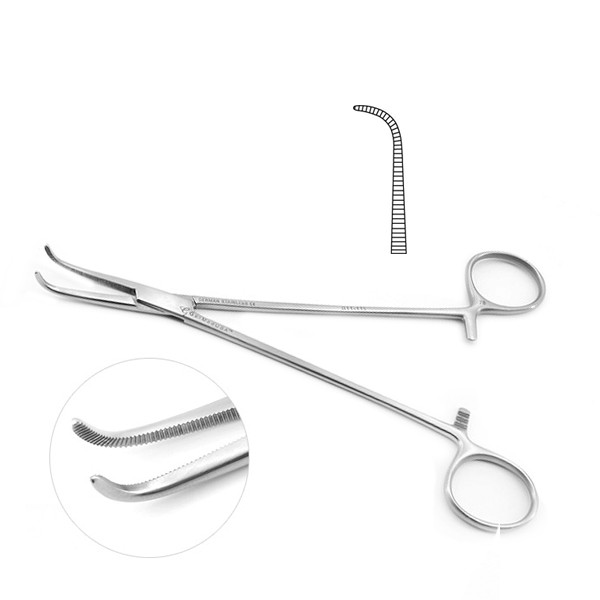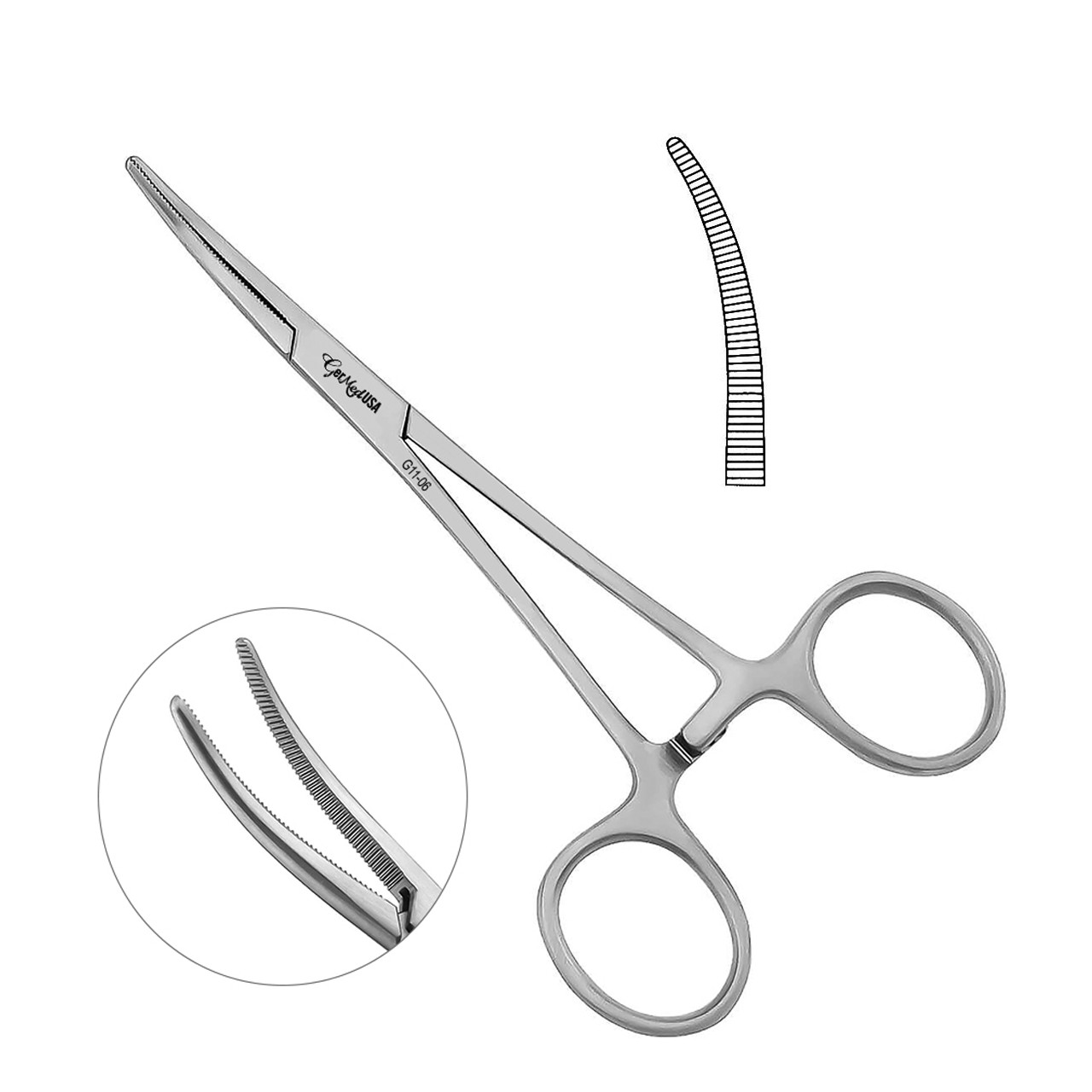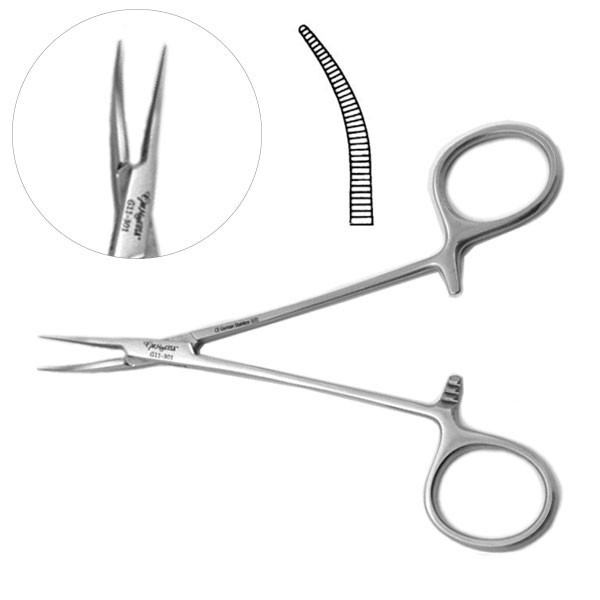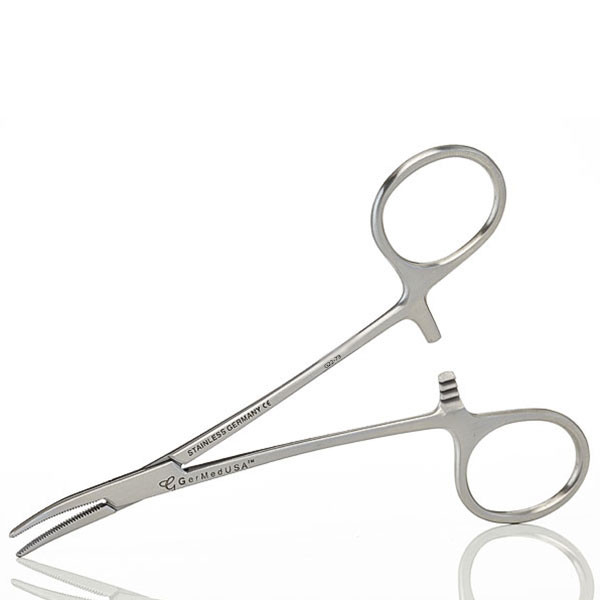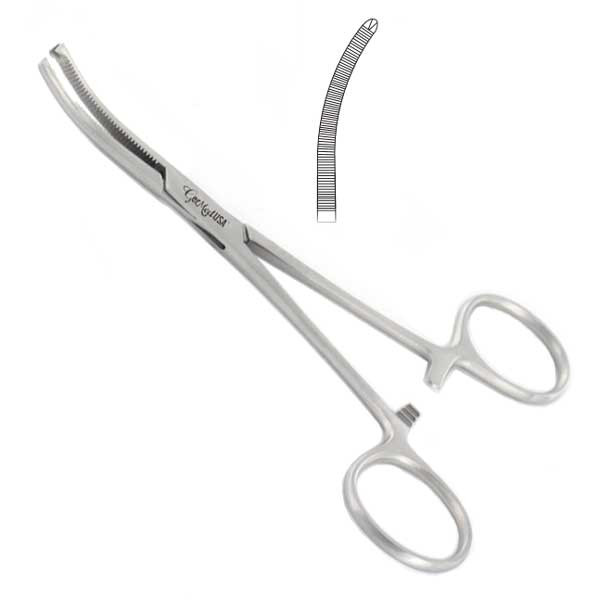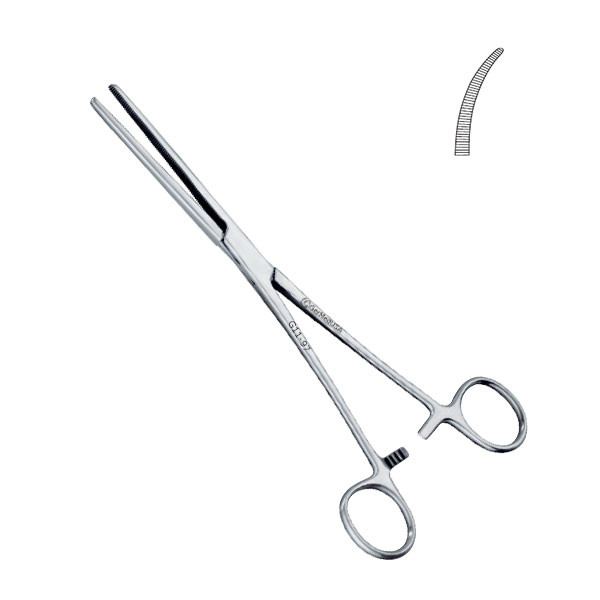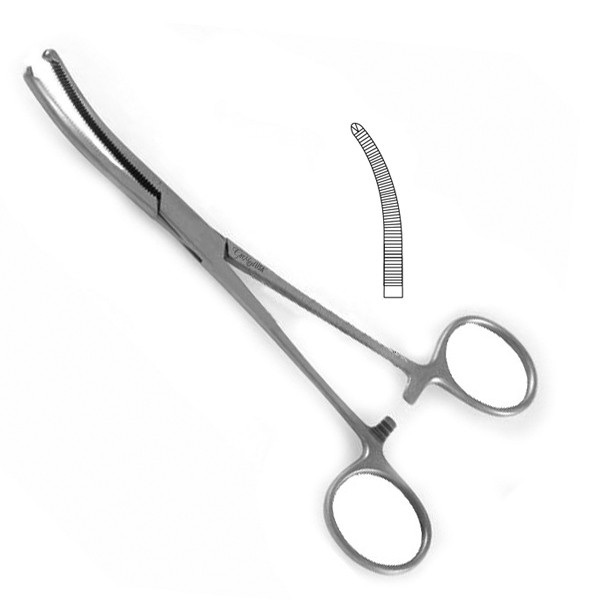According to a 2019 report, over 18 million hemostats were sold worldwide that year. In dentistry, hemostat instruments are most commonly used to manage bleeding.
Whether you're an aspiring dentist or a professional, this comprehensive guide will help you understand the different types of hemostats and how to choose the best one.
Basically, hemostats are types of hemostatic forceps used for blood occluding during dental procedures.
The most basic type, straight hemostats, account for over 60% of sales. Curved hemostats, which can reach tissues at angles, make up 20% of sales.
Artery forceps are specialized instruments designed to clamp medium and large arteries. They represent 10% of the hemostat market.
Let’s get started with a brief overview!
An Overview of Hemostats
Hemostats are surgical tools to clamp blood vessels and control bleeding during surgeries and procedures. These locking forceps come in various shapes and sizes for different applications.
Let's explore the types of hemostats forceps and how they're used.
The most common hemostat tools are Kelly clamps, which have a scissor-like handle and double-curved jaws. They are versatile for grasping and clamping medium to large blood vessels.
Mosquito hemostats have very pointed tips to clamp and litigate tiny blood vessels less than 2mm in size.
Types of Hemostats Commonly Used in Dentistry:
Baby Mixter Hemostatic Forceps
The Baby Mixter Hemostatic Forceps aim to assist tissues while operating on the covert surgical site. The following characteristics of these forceps:
• Serrated jaws
• Delicate Pattern
• Curved tip shape
• German forged
These hemostatic ring forceps can also be used for tissue dissection, clamping, or grabbing during dental procedures.
Crile Hemostatic Forceps
Crile Hemostatic Forceps are used to clamp blood arteries before ligation or cauterization. These instruments are available in the following patterns:
• Straight Pattern
• Curved Pattern
These forceps are available in a variety of diameters to meet a variety of medical practices.
Halsted Mosquito Forceps
The Halsted Mosquito Forceps are designed to clamp off the small blood arteries to control the bleeding. These forceps come with the following features:
- Narrow-pointed Jaws for a firm grip
- Ergonomic handle for precise performance
- Serrated jaws to ensure atraumatic application
These forceps are available in various styles, allowing you to find the perfect fit for your clinic.
Hartman Mosquito Forceps
Hartman Mosquito Forceps are used to grasp delicate tissues and blood arteries and stop bleeding. They are essential in pediatric surgery.
• Curved Pattern
• Straight Pattern
These dental instruments are also suitable for blunt tissue dissection.
Kocher Hemostatic Forceps
These types of hemostats are used in different surgical procedures to grip blood arteries. The patterns on these Kocher Forceps are as follows:
• Curved
• Straight
The 1x2 teeth ensure a stronghold of the blood vessels at the tip and the horizontal serrations over the entire jaw.
Mosquito Hemostatic Forceps
The Mosquito Hemostatic Forceps clamp blood vessels before cauterization or ligation. The following patterns are available:
• Micro Halstead Pattern
• Mosquito Pattern
These forceps, which are used in different surgeries, come in various diameters.
Pean Hemostatic Forceps
The primary function of these Pean Forceps is to hold blood arteries during different types of surgery. The following are the variations of these forceps:
• Overall length 5"
• Straight pattern
• German forged
The 1x2 teeth ensure a stronghold of the blood vessels at the tip, and horizontal serrations over the entire jaw further enhance this effect.
Rochester Ochsner Hemostatic Forceps
The purpose of Rochester Ochsner Hemostatic Forceps is to stop blood arteries during surgery to prevent bleeding. Here are a few noteworthy variations:
• Straight
• Curved
With their finger-ring handles and 1x2 teeth, these hemostats make any procedure more precise.
General Purposes of Hemostats
Medical hemostats are vital surgical tools to clamp blood vessels and control bleeding during surgical procedures. Their primary purpose is to obstruct blood flow, allowing surgeons to operate with enhanced precision.
Clamping and Grasping
Dental hemostats have clamping jaws that allow dentists to grasp blood vessels, tissues, gauze, and other materials. Once clamped down, the ratchet mechanism on the hemostat handles keeps the jaws closed with adjustable pressure. This allows surgeons to clamp down on a blood vessel or tissue, release their grip from the handles, and keep the hemostat in place.
Ligating and Tying Off
Some types of hemostat tools have a locking mechanism that allows surgeons to clamp down and lock the jaws on a blood vessel. This temporarily closes the vessel before the sutures are put in place.
Retracting and Exposing
Hemostats are also helpful for retracting and exposing tissues during surgery. Their clamping jaws can grasp and pull back tissues, fat, and muscle to provide better surgical site visibility. Some surgical hemostats have curved jaws explicitly designed for tissue retraction.
Cauterizing
Some types of hemostats have insulated jaws that can clamp and retract tissues during electrosurgery and cauterization. The insulation prevents the current from transferring to the surgeon's hands.
As you can see, hemostatic forceps are indispensable tools for dentists. They allow them to work efficiently in controlling bleeding and gaining access during procedures. Their varied designs and jaw configurations equip medical professionals with precise and effective work capabilities.
How to Choose the Right Hemostats for Your Needs
There are different types of hemostats, Choosing the right one for your needs depends upon many factors. The type of procedure, location in the body, and size of all blood vessels determine which hemostat will work best.
Size
Hemostats come in a range of sizes for both microsurgery and larger vessels. For delicate work, microsurgery hemostats have narrow, pointed tips. Larger hemostats, like Kelly and Crile, have border jaws for clamping bigger blood vessels. In between are medium-sized hemostat tools suitable for most procedures. So, choose the best suited for your needs.
Curvature
Some surgical hemostats, like the Halsted mosquito hemostat, have curved jaws to access hard-to-reach areas. Curved hemostats are helpful for microsurgery in confined spaces, but straight hemostats are more versatile and suitable for most applications.
Locking Vs. Non Locking Hemostats
Locking hemostats, like the Kelly, have a mechanism to clamp and keep the jaws in place. Non-locking hemostats, like the Crile, require manual pressure to open or close the jaws. Locking hemostats are suitable for securing and ligating, while non-locking is better for simple grasping.
Tips
There are several variations of hemostat tips. Smooth tips are non-traumatic, while serrated or toothed tips grip tissues more securely. Blunt tips are safer when working on delicate tissue. Some hemostats have serrated soft jaws.
The Medical hemostats in your surgical pack depend upon your specialty. General surgeons have a range of sizes of curved and straight hemostats, both locking and non-locking, with assorted tip styles. Microsurgeons need a more delicate hemostat. Knowing the right tool for your job will make any procedure smoother and safer for your patients.
The Proper Maintenance and Care for Hemostats
Proper maintenance and care ensure dental hemostats' optimal performance, durability, and safety.
Here's a detailed guide on how to clean and sterilize these types of hemostats effectively:
Cleaning
Proper cleaning of medical hemostats is essential to remove blood, debris, and other contaminants that can accumulate during reuse. This helps prevent corrosion, wear and tear, and the spread of infections.
Here's the recommended cleaning procedure:
- Initial Rinsing: Rinse the hemostat tool thoroughly under running water immediately after use to remove gross debris and blood.
- Detergent Cleaning: Prepare detergent solution in warm water. Immerse the hemostat dental instrument in the solution and use a soft brush or cloth to gently clean all surfaces, including the jaws, hinges, and handles.
- Second Rinsing: Rinse the Surgical hemostats thoroughly under running water to remove all traces of detergent.
- Drying: Dry the hemostats completely using a clean, lint-free towel.
Sterilization
Sterilization processes help destroy all microorganisms, including bacteria, viruses, and fungi, to prevent the transmission of infections during surgical procedures.
Hemostat dental instruments must be sterilized before each use to ensure the safety of both the patient and the healthcare provider.
There are several methods of sterilizing the instruments, but we recommend autoclaving.
Autoclaving
Autoclaving is the most common and effective method for sterilizing hemostat dental instruments. It involves using steam under pressure to kill all microorganisms.
- Preparation: Wrap the surgical hemostats in a permeable sterilization wrap or place them in a tray.
- Autoclaving Cycle: Follow the recommended autoclave cycle for hemostats, typically 121°C (250°F) at 15 psi for 15 minutes.
- Storage: Once the autoclave cycle is complete, allow the hemostats to cool completely before removing them. Store them in a clean, dry, and sealed container to maintain sterility.
Other Methods of Sterilizing Different Types of Hemostats
Dry Heat Sterilization
Place the hemostat tools in a dry heat sterilization oven and follow the manufacturer's instructions for temperature and duration. Dry heat sterilization is typically performed at temperatures between 160°C and 180°C for a specified time.
Steam sterilization
Place the instrument in an autoclave that sterilizes using steam under pressure. Follow the autoclave's manufacturer's temperature, pressure, and duration instructions. Steam sterilization typically involves exposing steam to 134°C and a pressure of 203 kPa for a specified time.
Chemical Sterilization
Chemical sterilization is an alternative method, especially if an autoclave is unavailable.
- Preparation: Use a hospital-grade disinfectant solution designed explicitly for the chemical sterilization of instruments. Follow the manufacturer's instructions for preparation and dilution.
- Immersion: Submerge the instrument completely in the disinfectant solution for the recommended contact time, typically 30-60 minutes.
- Rinsing: After removing the instruments from the disinfectant solution, rinse them thoroughly under running water to remove all traces of the disinfectant.
- Drying: Dry the hemostats completely using a clean, lint-free towel.
Maintenance Tips
- Regular Inspection: Regularly inspect dental hemostat forceps for any signs of damage, such as bent or loose jaws, cracks, or corrosion.
- Lubrication: To ensure smooth operation and prevent rust, apply a thin layer of instrument oil to the hinges and locking mechanisms.
- Storage: Store instruments in a clean, dry, and dust-free environment to prevent contamination and damage.
Following these proper cleaning, sterilization, and maintenance guidelines ensures that your instruments remain in optimal condition, provide years of reliable service, and minimize the risk of infections.
Conclusion!
So there, you have everything you need to know about hemostats and how they control bleeding during surgery. Whether preparing for a medical procedure or just curious about surgical instruments, understanding different types of hemostats and their critical role can help you feel at ease.
Are you looking to improve your dental practice? Check out GerDentUSA for top-quality instruments. Our cutting-edge instruments will take your patient care to the next level. Browse our selection, and you'll see the attention to detail, durability, and new ideas. We ensure excellence with every product. Precision is our priority.
FAQs
What is another name for a hemostat?
A hemostat is commonly known as a hemostatic clamp, arterial forceps, and pean.
What is another name for kelly forceps?
Kelly forceps, or mosquito or tissue forceps, are fine-tipped grasping forceps used to pick up and manipulate microscopic objects.
What is the function of a hemostat?
Hemostats are medical clamps that doctors and nurses use during surgeries to stop bleeding.


